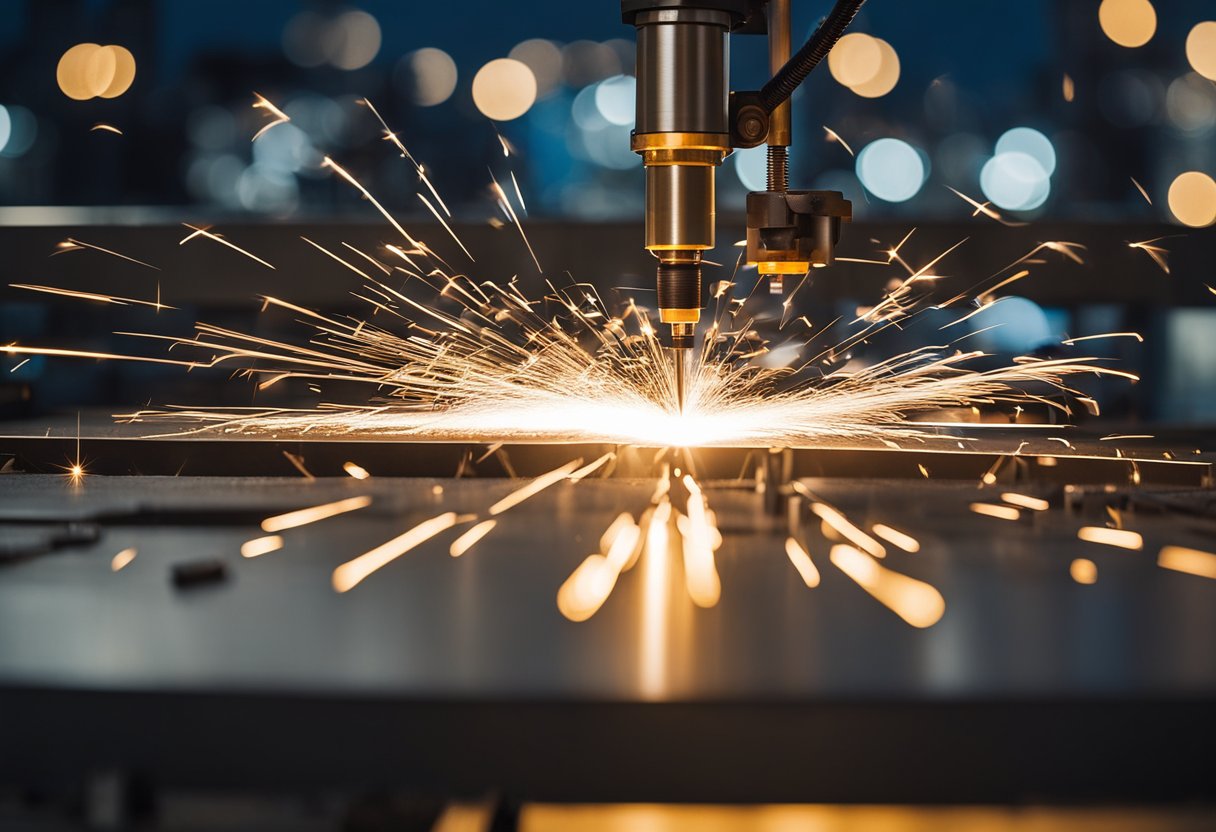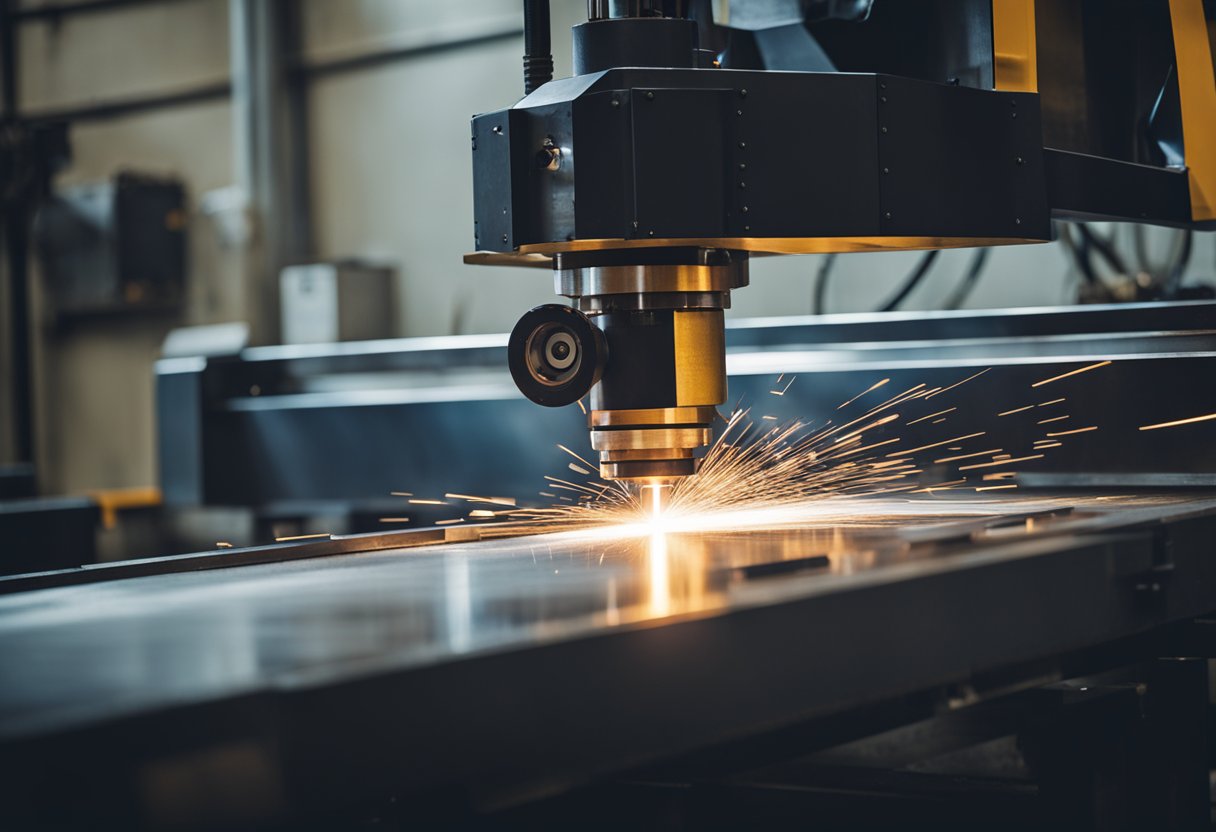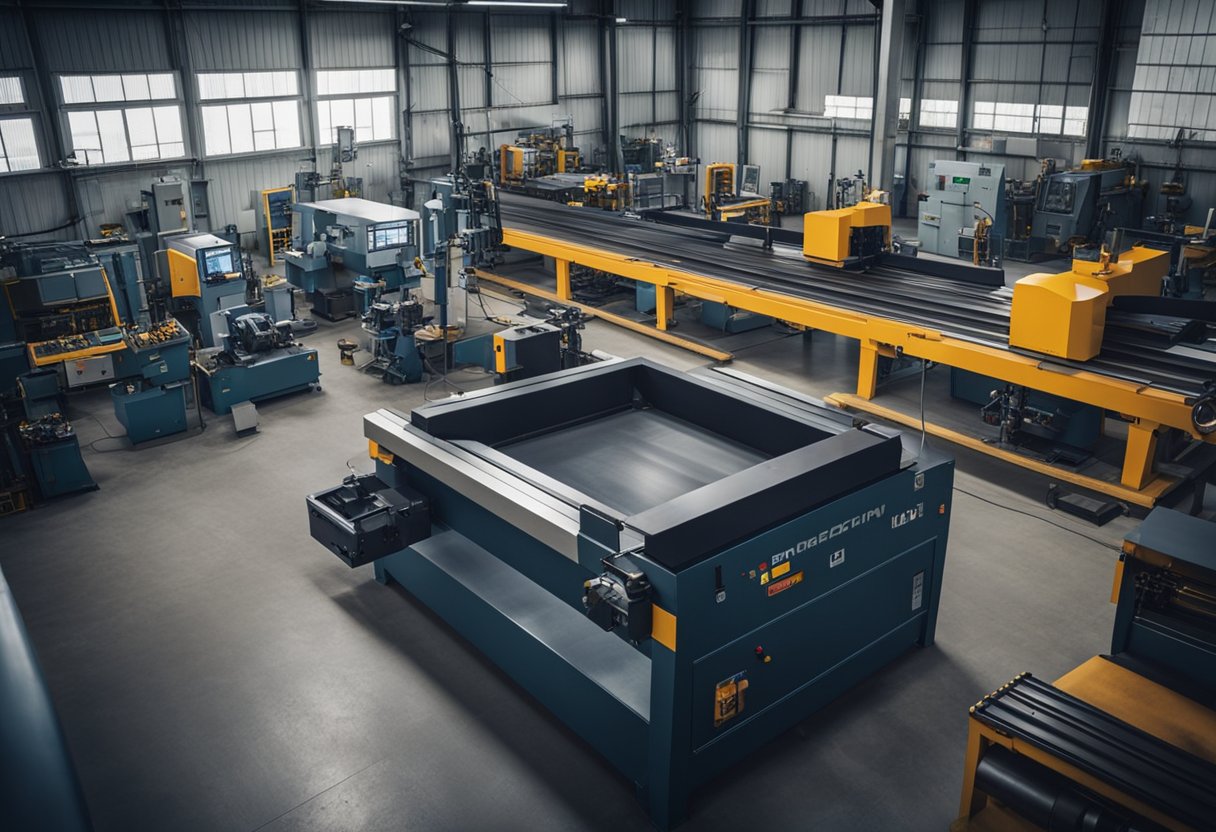CNC Plasma Table Bay Area: The Top Providers in the Region
A CNC plasma table is a computer-controlled cutting machine that uses plasma to cut through various materials such as metal, wood, and plastic. The Bay Area is a hub for innovation and technology, and it's no surprise that there are several companies that specialize in CNC plasma cutting in the region. These companies offer a range of services, from custom metal fabrication to precision cutting for industrial applications.

One of the advantages of using a CNC plasma table is its precision and accuracy. The computer-controlled machine ensures that every cut is made with exact measurements, eliminating the need for manual cutting and reducing the margin of error. This makes it an ideal tool for industries that require high precision cutting, such as aerospace, automotive, and manufacturing. Additionally, CNC plasma cutting is a faster and more efficient method compared to traditional cutting methods, saving time and money in the long run.
In the Bay Area, there are several companies that offer CNC plasma cutting services, each with their own unique specialties and capabilities. Some companies specialize in custom metal fabrication for architectural and artistic applications, while others focus on precision cutting for industrial and manufacturing needs. With the rise of technology and innovation in the Bay Area, CNC plasma cutting is becoming an increasingly popular and necessary tool for businesses in various industries.
Understanding CNC Plasma Tables

CNC plasma tables are computer-controlled cutting machines that use a plasma torch to cut through various materials such as steel, stainless steel, aluminum, wood, brass, and copper. These machines are widely used in various industries such as metal fabrication, automotive, aerospace, and construction.
Core Components and Technology
A CNC plasma table consists of several core components, including the machine bed, gantry, torch height control, and plasma power source. The machine bed provides a stable platform for the material being cut, while the gantry carries the torch and moves along the X and Y axes. The torch height control ensures that the torch maintains a consistent distance from the material being cut, while the plasma power source generates the plasma arc that cuts through the material.
The technology behind CNC plasma tables has evolved significantly over the years, with advancements in software, hardware, and cutting technology. Modern CNC plasma tables use high-definition plasma cutting technology, which allows for greater precision and cut quality.
Precision and Cut Quality
One of the key advantages of CNC plasma tables is their ability to cut with precision and accuracy. With the use of advanced software and hardware, CNC plasma tables can produce intricate cuts with tight tolerances. The cut quality of CNC plasma tables depends on several factors, including the power of the plasma torch, the material being cut, and the thickness of the material.
CNC plasma tables can cut through a wide range of materials, including stainless steel, mild steel, aluminum, wood, brass, and copper. The thickness of the material that can be cut depends on the power of the plasma torch, with some machines capable of cutting through materials up to several inches thick.
Materials and Capabilities
CNC plasma tables offer a wide range of capabilities when it comes to cutting different materials. Stainless steel, for example, can be cut with precision and accuracy, producing clean edges and minimal distortion. Mild steel can also be cut quickly and efficiently, making it a popular choice for industrial applications.
Aluminum, on the other hand, requires a different cutting approach due to its heat conductivity and melting point. CNC plasma tables that are designed to cut aluminum typically use a lower power plasma torch and a different gas mixture to ensure clean cuts without distortion.
In summary, CNC plasma tables are versatile cutting machines that offer precision and accuracy when cutting a variety of materials. With advancements in technology and cutting techniques, these machines continue to play an important role in various industries, including metal fabrication, automotive, aerospace, and construction.
Selecting the Right CNC Plasma Table for Your Needs

Investing in a CNC plasma table is a significant decision for any business owner. With so many options available, it can be challenging to select the right one to meet your specific needs. Here are some factors to consider when selecting a CNC plasma table.
Factors Influencing CNC Plasma Table Selection
When choosing a CNC plasma table, the following factors should be taken into consideration:
- Table size: The size of the table should be determined by the size of the material you will be cutting.
- Shop space: The dimensions of the shop space should be considered when selecting a table size.
- Material storage: The table should have enough space to store the materials you will be cutting.
- Air compressor: The compressor should have the capacity to meet the requirements of the plasma cutter.
- Proximity to 120v and 220v: The table should be located close to 120v and 220v outlets.
- Electrical supply: The electrical supply should be able to handle the power requirements of the plasma cutter.
- Earth grounding: The table should be properly grounded to prevent electrical hazards.
Software and Control Systems
The software and control systems used with a CNC plasma table are critical to its performance. The following should be considered:
- CAD/CAM software: The table should be compatible with CAD/CAM software, such as Autodesk Fusion 360 CAD/CAM software.
- Hypertherm: The plasma cutter should be compatible with Hypertherm software.
- THC (Torch Height Control): The table should have a THC system to maintain proper cutting height.
Support and Warranty Information
When selecting a CNC plasma table, it is essential to consider the support and warranty information provided by the manufacturer. The following should be taken into account:
- Support team: The manufacturer should have a reliable support team to assist with any issues that may arise.
- Warranty: The table should come with a warranty that covers any defects or issues that may arise.
By considering these factors and selecting a CNC plasma table that meets your specific needs, you can ensure that your investment is a wise one.
Operational Aspects of CNC Plasma Cutting

Setting Up Your CNC Plasma Table
Setting up your CNC plasma table involves several steps, including the installation of hardware components such as the gantry, cutting table, and motors, as well as the electronics and CNC control. It is important to ensure that all components are properly aligned and secured to prevent any issues during operation. Additionally, it is crucial to calibrate the machine to achieve accurate cuts and to optimize cut capacity and speed.
Maintenance and Safety Protocols
Maintaining your CNC plasma table is essential for ensuring its reliability and longevity. Regular maintenance includes cleaning the cutting table, replacing worn components, and checking the router for any signs of damage. It is also important to follow safety protocols, including wearing appropriate personal protective equipment and ensuring that the machine is properly grounded.
Enhancing Efficiency and Production
There are several ways to enhance the efficiency and production of your CNC plasma cutting process. One way is to use secondary finishing tools, such as grinders or sanders, to smooth out rough edges and improve the overall finish of the cut. Another way is to optimize the cut speed and adjust the settings to achieve the desired cut quality. Additionally, it is important to regularly monitor the machine's performance and make any necessary adjustments to maximize efficiency.
Overall, CNC plasma cutting is a versatile and efficient method for cutting a wide range of materials. By following proper setup, maintenance, and safety protocols, as well as implementing strategies to enhance efficiency and production, users can achieve accurate and reliable cuts with their CNC plasma table.
Frequently Asked Questions
What is the typical price range for a CNC plasma table in the Bay Area?
The price range for a CNC plasma table in the Bay Area can vary depending on the size, features, and brand. Generally, a basic CNC plasma table can cost between $5,000 and $10,000, while a larger and more advanced model can cost upwards of $50,000.
Where can I find a used CNC plasma table for sale in the Bay Area?
There are several online marketplaces and classifieds websites where individuals and businesses can find used CNC plasma tables for sale in the Bay Area. Some popular options include eBay, Craigslist, and Facebook Marketplace. It's important to thoroughly research the seller and inspect the machine before making a purchase.
How does the cost of a CNC plasma table in the Bay Area compare to other regions?
The cost of a CNC plasma table in the Bay Area is generally higher compared to other regions due to the high demand and cost of living in the area. However, the Bay Area also offers a wider selection of brands and models, as well as access to expert technicians and support.
What are the top-rated CNC plasma tables available for purchase in the Bay Area?
Some of the top-rated CNC plasma tables available for purchase in the Bay Area include the Hypertherm Powermax45 XP, Lincoln Electric Tomahawk 375, and Torchmate 4400/4800. It's important to consider factors such as size, cutting capacity, and software compatibility when choosing a CNC plasma table.
What are the financial benefits of owning a CNC plasma table?
Owning a CNC plasma table can offer several financial benefits, including increased productivity, reduced labor costs, and the ability to take on more complex projects. CNC plasma tables can also help businesses save money on outsourcing and material waste by allowing for precise and efficient cutting.
In terms of precision and material compatibility, how does a plasma table compare to a laser cutter?
While both plasma tables and laser cutters offer precise cutting capabilities, plasma tables are generally more versatile in terms of material compatibility. Plasma tables can cut through a wider range of materials, including thicker metals, while laser cutters are typically better suited for thinner materials such as acrylic and wood.
